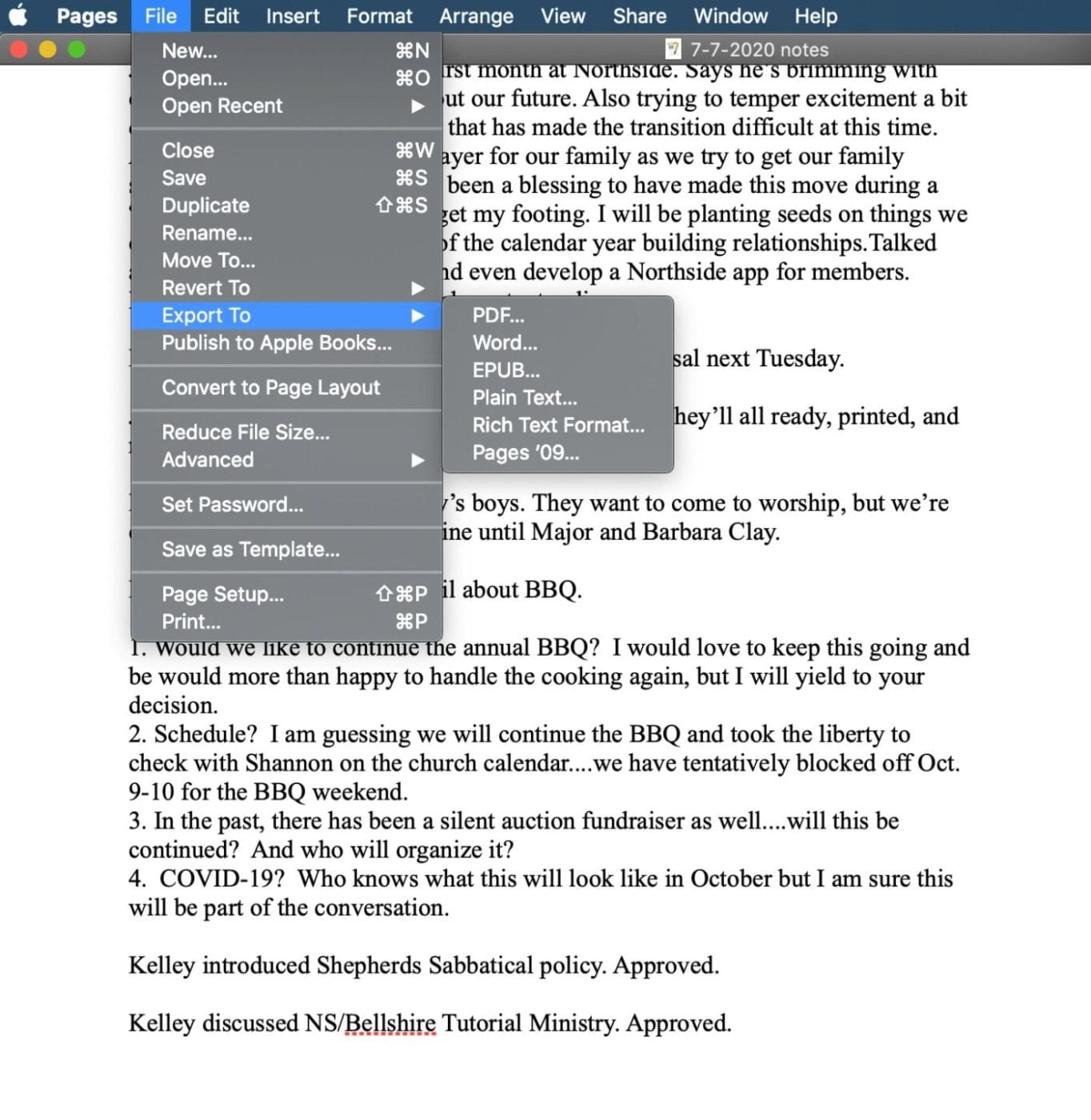
Microsoft Office is a suite of must-have apps for some folks. Not me, but I do need/have to open a Word, Excel, or PowerPoint doc occasionally. No problem.
So in case you didn’t know…
You can open or export Microsoft Office docs in macOS thanks to Apple’s Pages, Numbers, and Keynote!
To export, for example, a Pages document to Word format, with Pages open, go to the File menu at the top left of the screen and choose Export To. You can not only export to Word, but also Pages ’09, PDF, EPUB, plain text, and rich text format. Numbers and Keynote offer similar functionality.

That’s all there is to it!
Pages, Numbers, and Keynote are available from the Mac App Store.

These instructions apply, for the most part, to other versions of macOS besides Catalina. However, I’m using Catalina on a 16-inch MacBook Pro for this tutorial.
Dennis has over 40 years of journalism experience and has written hundreds of articles. For the past 20-plus years, he's been an online journalist, covering mainly Apple Inc. He's written for MacCentral, MacWorld, MacMinute, Macsimum News, Apple Daily Report, and is now contributing editor at Apple World Today.
Be Sociable, Share This Post! Dennis Sellers September 10, 2020Unfortunately, with Pages and Numbers we don’t have access easily to all custom functionalities installed in Tool and Menu bar as I have in Microsoft Office. Just too bad, Pages and Numbers are too complicated to use. Same remarks are worth for LibreOffice and NeoOffice. I don’t use Keynote at all.
Anon E Mous says:When I retired from the local school district, I lost my free access to Microsoft Office, so I started looking for alternatives. I use Pages for documents, but Numbers has a lot of quirks to it when importing older Spreadsheets and in other areas. I use Keynote on those rare occasions where I would have used PowerPoint. I use LibreOffice for spreadsheets 99.99% of the time now. It is the most like Excel of anything I have found, so much so, that I have stopped looking for alternatives to Excel.
(home) says:“Pages, Numbers, and Keynote are available from the Mac App Store” — except that they aren’t. Not if you’re running the still officially supported High Sierra because your hardware isn’t Metal-capable. So, question: do you know of a way to get the previous version of iWork, which did run on 10.13? Preferably before the end of support for 10.13? Thanks for any effort.
Harold says:I’ve tried this with Keynote and Word from previous documents made with PowerPoint and Word (for MS Office) and the accuracy of format, text fonts, graphics layouts all suffer from partial corruption from the original MS office authentic versions of these platforms. So I would warn people who need to work professionally between these two methods that the more complex your work, the more chances they will need modifications when exported and used in MS Word and PowerPoint. Also, visa versa.
Brian Wickham says:On my Mac I recently opened an Excel spreadsheet and made a minor change to it. When I saved it, it was automatically saved as a Numbers file with no change to the original XLS file. Neat!
Mike Kramer says:You can also use Libre Office, which can be downloaded and used for free from Libreoffice.org. Alternatively you can purchase it on DVD from Amazon for $12.95. I have used it to open older Mac Office files that show as exec files that Office 365 won’t. The files can then be saved in various formats.
Robert Snyder says:I would really like to see a similar article on Visio/Omnigraffle/LucidChart interoperability’s. I am an enterprise architect who works in a predominantly MS workplace but who is able thrive with Omnigraffle and a pro subscription to LucidChart. Being the Mac guy in a Visio hasn’t always been that easy, but improvements from Omnigroup and Lucid let me be my creative Mac self while delivering documents that shine on the displays of my MicrSoft colleagues. And with more of my work involving AWS/Azure/GCP deployments extensions to Lucid and hava.io make it possible to generate complete diagrams directly from PoC builds in the cloud, including options for price estimates to help me deliver clarity and for the business make educated decisions.
legepe says:Hello,
Some strange behaviours with importing Excel files in Numbers v. 10.1 application.
The abscissa and ordinate numbers in the charts where changed.
In the original file for example the abscissa where 1, 2 , 3 etc … when opened in Numbers, there where changed in 1.5, 2.5, etc …